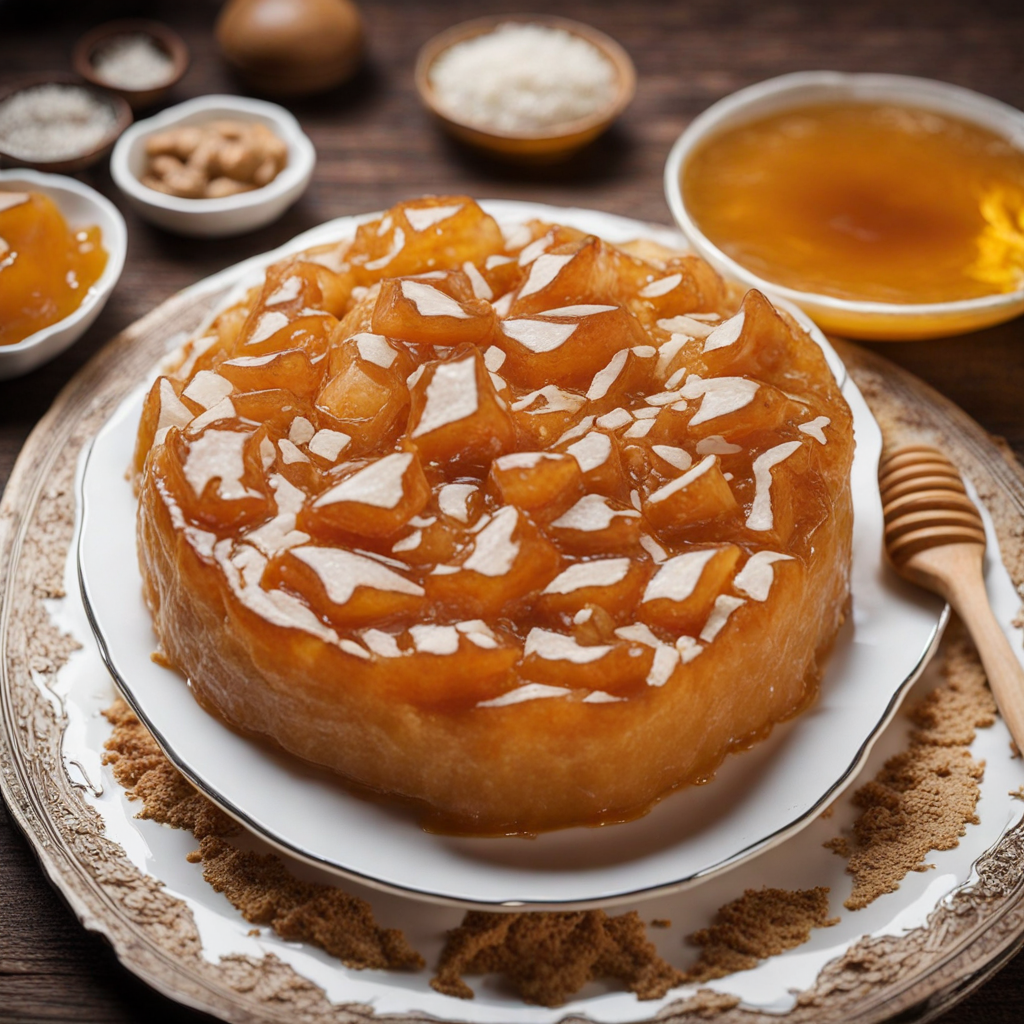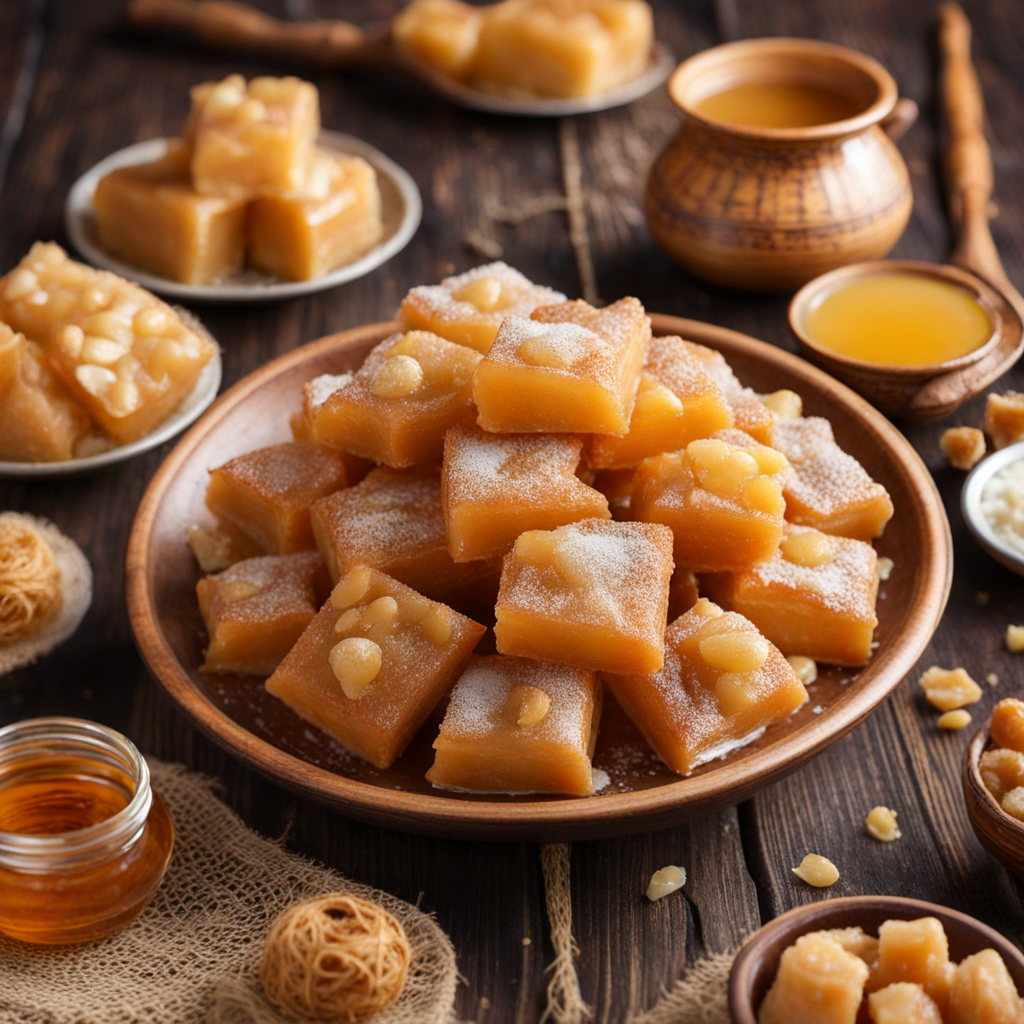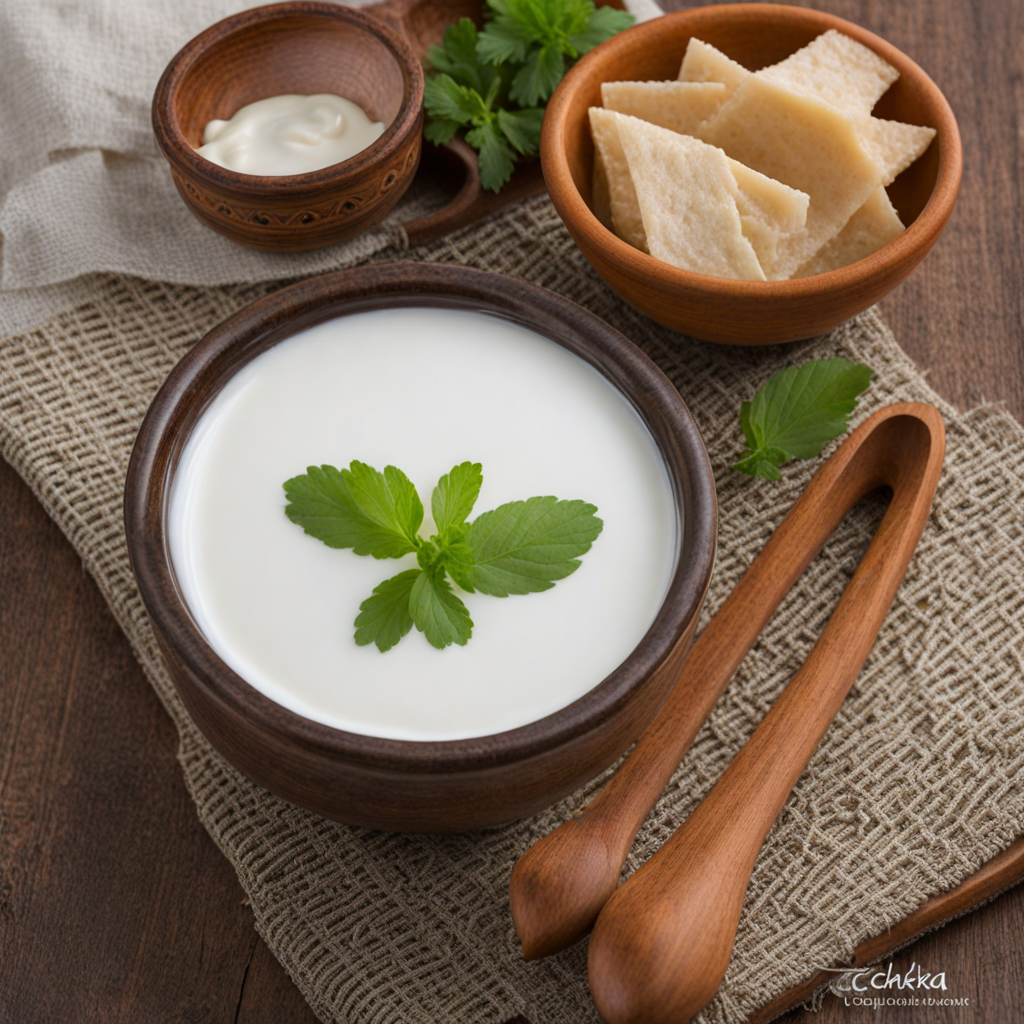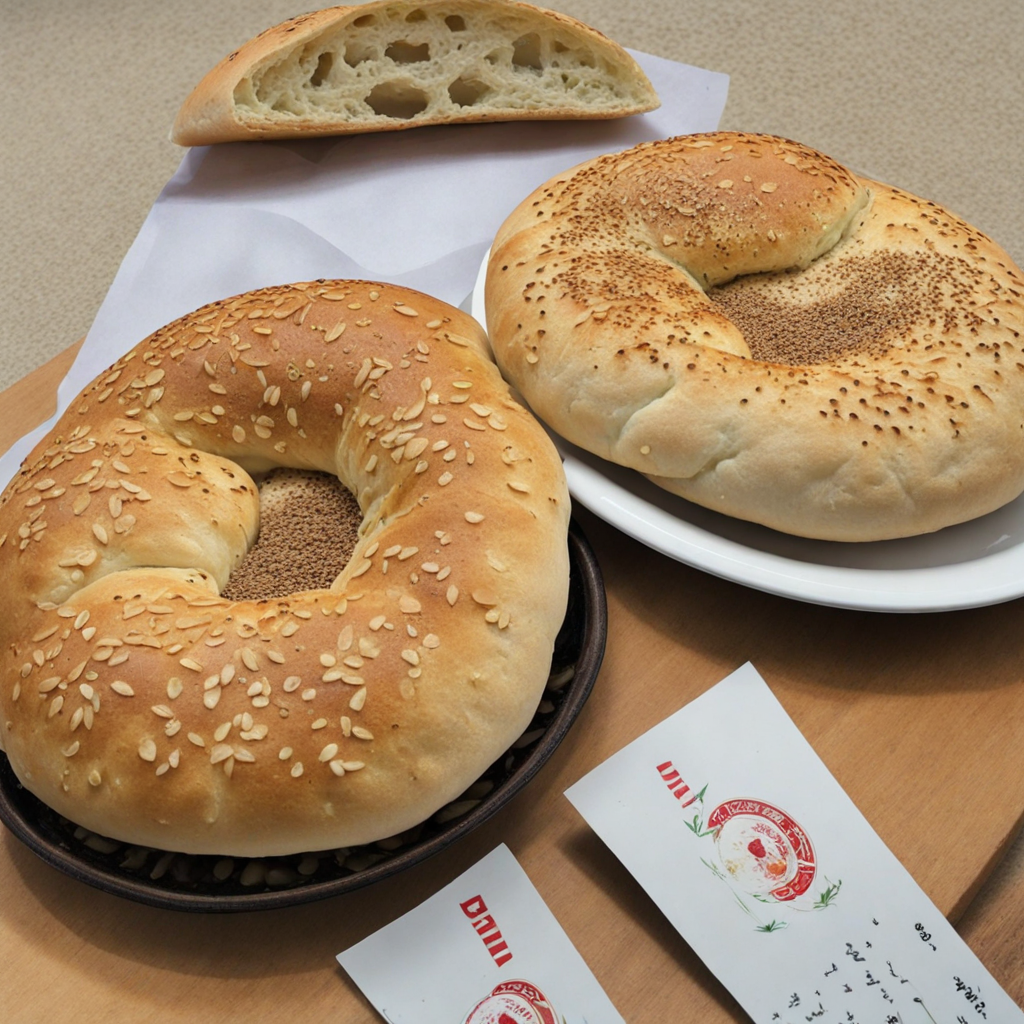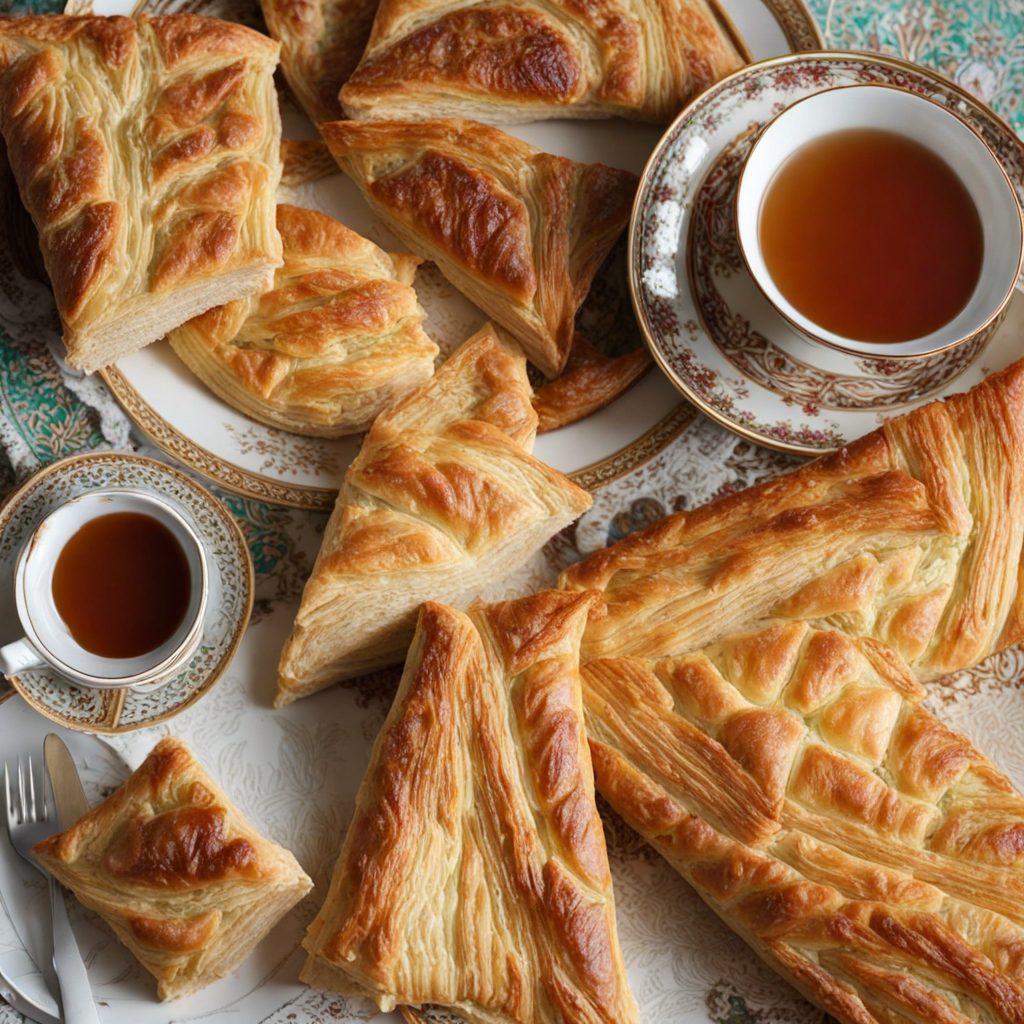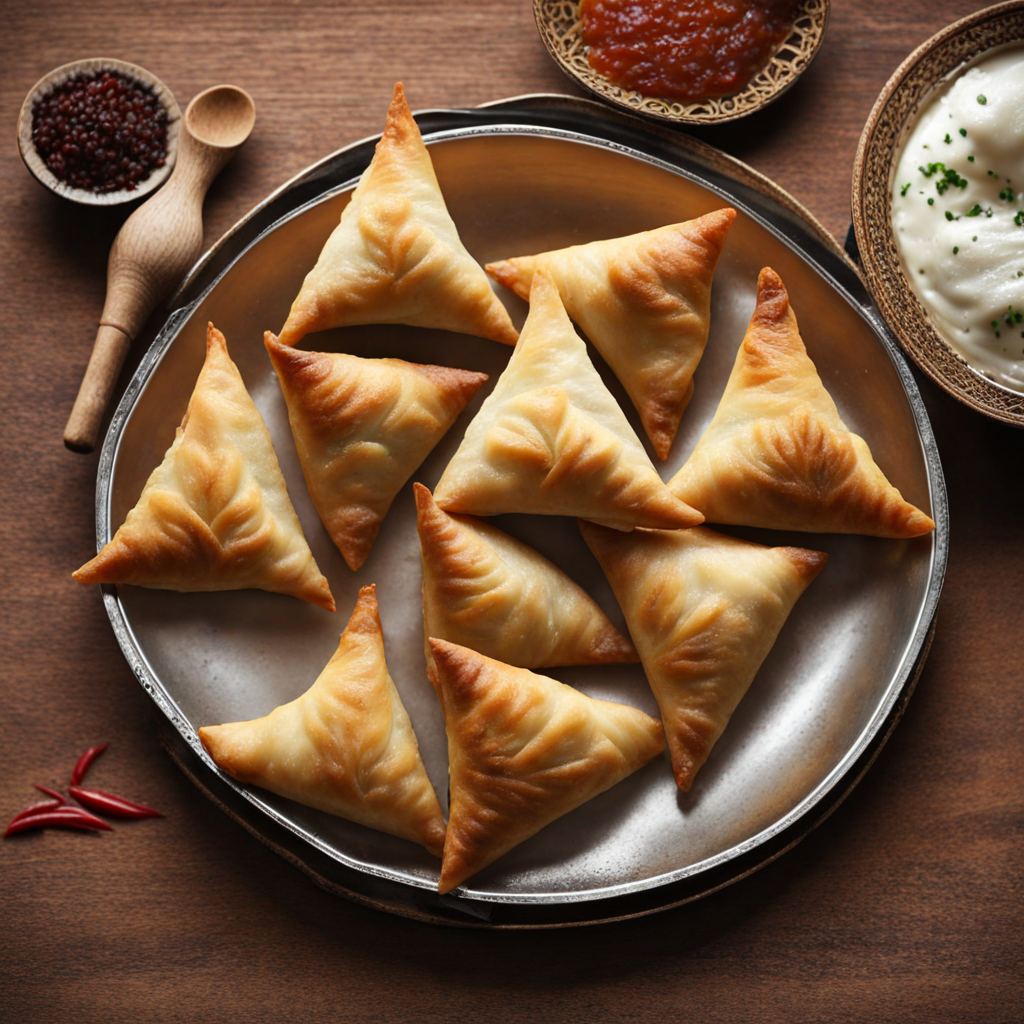Chak-chak
Chak-chak is a delightful traditional sweet from Tajikistan that embodies the essence of Central Asian cuisine. This dish is primarily made from fried dough, which is cut into small pieces and then shaped into irregular, bite-sized morsels. The dough is typically made from wheat flour, eggs, and a pinch of salt, providing a light and airy texture. Once fried to a golden brown, these dough pieces are coated in a luscious syrup made from honey and sugar, giving Chak-chak its signature sticky sweetness. The combination of the crunchy exterior and the gooey, syrupy interior creates a unique and addictive texture that is both satisfying and indulgent. What sets Chak-chak apart is its presentation and the way it is often enjoyed. Typically served at celebrations and special occasions, this sweet treat is often molded into a mound or pyramid shape, sometimes adorned with nuts or dried fruits, adding an extra layer of flavor and crunch. The vibrant golden color of the honey syrup not only makes it visually appealing but also enhances the sensory experience, inviting you to dig in. Each bite offers a burst of sweetness that is balanced by the subtle nuttiness of the fried dough, making it a perfect accompaniment to tea or as a dessert after a hearty meal. For those exploring new flavors, Chak-chak presents a wonderful opportunity to experience the rich culinary heritage of Tajikistan. The dish is not just about taste; it embodies the warmth and hospitality of Tajik culture, often being shared among family and friends during festive gatherings. Whether you are enjoying it at a local celebration or trying your hand at making it at home, Chak-chak promises a delightful journey into the world of Tajik sweets, inviting you to savor the sweetness of its rich tradition.
How It Became This Dish
The Enigmatic History of Чак-чак: A Sweet Legacy from Tajikistan #### Origins and Ingredients Чак-чак, often transliterated as "chak-chak," is a beloved traditional dessert that hails from Central Asia, particularly associated with Tajikistan, though its popularity extends to neighboring countries like Uzbekistan and Kazakhstan. The name "chak-chak" is derived from the sound made when the dough pieces are fried and then mixed with honey. The dish consists of deep-fried dough, often shaped into small, irregular pieces resembling tiny, golden nuggets, which are then coated with a sweet, viscous honey syrup. Sometimes, nuts or dried fruits are added for texture and flavor, enriching the dish’s complexity. The primary ingredients used to make chak-chak include flour, eggs, and honey, all of which are staples in the diets of Central Asian peoples. The simplicity of these ingredients belies the intricate flavors and textures that emerge during the cooking process. The dish reflects the agricultural practices of the region, where honeybees thrive and wheat is a key crop. #### Cultural Significance Chak-chak is much more than just a dessert; it holds a prestigious place in the cultural and social fabric of Tajik society. Traditionally prepared for festive occasions, weddings, and religious celebrations, chak-chak symbolizes hospitality and generosity. It is often served to guests as a token of welcome and goodwill, reinforcing the importance of communal sharing in Tajik culture. In Tajikistan, food is an important vehicle for expressing identity, and chak-chak stands as a testament to the heritage of the region. The act of preparing and serving chak-chak often involves the participation of family members, fostering bonds and creating communal experiences. The dish is also a symbol of abundance and prosperity, often displayed prominently on the table during major celebrations. #### Historical Development The history of chak-chak can be traced back to the nomadic cultures of Central Asia, where the practice of boiling or frying dough has ancient roots. The use of honey as a sweetener is also a time-honored tradition, dating back to the early agricultural societies in the region. As these cultures evolved, so too did their culinary practices, influenced by trade routes such as the Silk Road, which facilitated cultural exchange between East and West. The Silk Road not only introduced new ingredients but also allowed for the fusion of culinary techniques from various cultures. As traders, travelers, and nomads mingled, they brought with them their unique customs and flavors. This intermingling helped chak-chak evolve from its rudimentary origins into a more refined dessert that incorporated local ingredients and preferences. #### Regional Variations While chak-chak is primarily associated with Tajikistan, it has inspired various regional adaptations. In Uzbekistan, for instance, chak-chak is often referred to as “chak-chak” as well but may be prepared with slight variations in the recipe, such as the inclusion of different nuts or spices. In Kazakhstan, a similar dish known as "zhent" is served, showcasing the versatility of the basic concept across different cultures. Over time, chak-chak has also developed a presence in urban areas, where it is often sold in bakeries and markets. The dish has adapted to modern tastes, leading to innovative versions that may include chocolate drizzles or fruit toppings, though traditionalists often prefer the classic honey glaze. #### Modern-Day Significance In contemporary Tajik society, chak-chak continues to be cherished as a staple of traditional cuisine. It is prominently featured during major holidays such as Nowruz, the Persian New Year, where it symbolizes renewal and the arrival of spring. Additionally, chak-chak is served during Ramadan, marking the breaking of fast with a sweet treat that embodies joy and celebration. The dessert's popularity has transcended borders, gaining international recognition among food enthusiasts and culinary explorers. It has been featured in various food festivals, culinary competitions, and television shows, where chefs reinterpret the dish while paying homage to its roots. This wider exposure has also led to an increased interest in Tajik cuisine as a whole, encouraging a new generation of cooks to embrace and preserve their culinary heritage. #### Culinary Techniques and Rituals The preparation of chak-chak is often a ritualistic process that involves several steps. First, the dough is mixed and kneaded, then rolled out before being cut into small pieces. The dough is then deep-fried until it reaches a golden brown color, an essential step that gives chak-chak its signature crunch. Once fried, the pieces are quickly tossed in a warm honey syrup, allowing the sweet glaze to coat each nugget evenly. This method of preparation often requires teamwork, with family members helping to shape, fry, and glaze the dough. The communal effort involved in making chak-chak reflects the values of cooperation and unity that are deeply ingrained in Tajik culture. #### Conclusion Chak-chak is more than just a dessert; it is a sweet embodiment of Tajik culture and history. Its origins rooted in the nomadic traditions of Central Asia, it has evolved over centuries, adapting to the influences of neighboring cultures while retaining its core identity. Today, chak-chak serves as a bridge connecting past and present, highlighting the resilience of culinary traditions amidst globalization. As it continues to be prepared for special occasions and shared among friends and family, chak-chak remains a vital part of Tajik identity, a symbol of hospitality, love, and the enduring power of food to bring people together. The legacy of chak-chak, with its rich history and cultural significance, is sure to endure as it finds its place in both traditional and modern culinary landscapes.
You may like
Discover local flavors from Tajikistan


